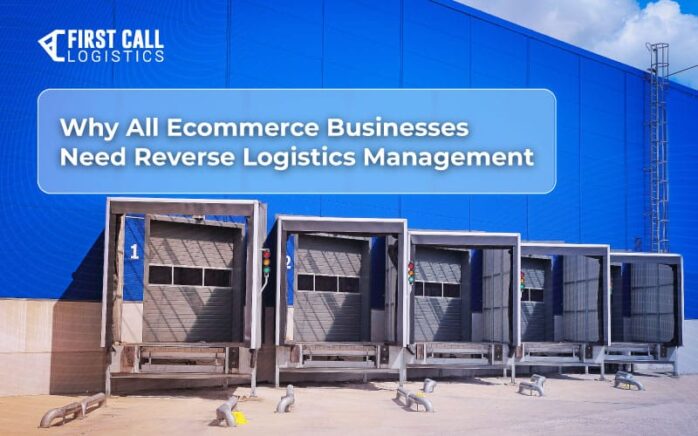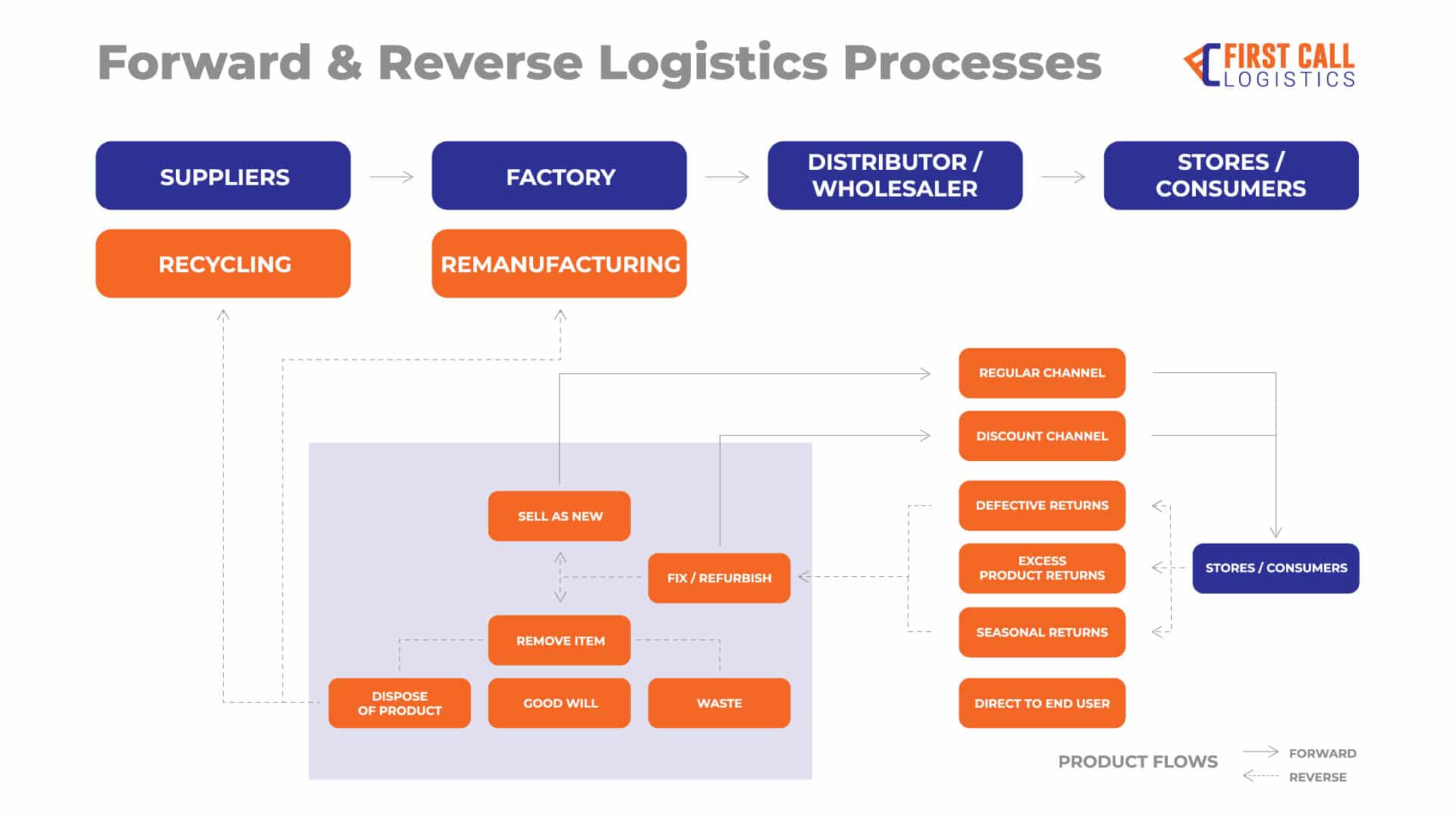Why All Ecommerce Businesses Need Reverse Logistics Management

Merchandise returns cost companies an estimated $165 million out of every $1 billion in sales in 2022 — a 16.5% return rate. As sustainability and waste management initiatives become more prevalent, businesses are rethinking the second half of their products’ lifespan.
Reverse logistics refers to the movement of goods from consumers to the distributor or, in some cases, as far back as the original supplier. This backward movement through the supply chain is becoming an area of significant concern for many businesses as the costs associated with reverse logistics rise. Here’s our breakdown of the reverse logistics basics:
When Reverse Logistics Are Required
Most products follow the supply chain normally, moving from supplier to customer as its final destination. Certain events trigger product movement in the opposite direction:
- Returns – Usually initiated by the customer because they don’t want the product anymore, received the wrong product or weren’t satisfied with their purchase.
- Recalls – Initiated by the company due to safety concerns regarding the product.
- Repairs or Trade-in Offers – A customer could send in a broken product for repair or the company could offer to replace old products with newer, upgraded versions and then refurbish the old model.
- Remanufacturing Efforts – Sometimes manufacturers will offer incentives to customers who send in their old or damaged products so the manufacturer can disassemble it and reuse the parts that are still in good working condition.
- Recycling for Resale – If a product is of no use to the manufacturer, it can sometimes be sold to other businesses who can use it for their own purposes.
- End of Usefulness – When a product reaches the end of its lifespan and must be disposed of, certain products may need to be returned to a distributor with the equipment and facilities to dispose of them safely.
Reverse Logistics vs. Traditional Logistics
Traditional supply chain movement has a clearly defined start and end point: products start with the supplier and end up on a customer’s doorstep. Reverse logistics isn’t as direct — some products only require a quick return for a replacement already on-hand in a nearby warehouse, while others must travel all the way back to the manufacturer.
Reverse logistics has to account for product movement in both directions. In the case of a repair, the product has to move from the customer to the manufacturer, then back to the customer. This requires clear communication, accurate product labeling and tracking processes and superb problem-solving skills to manage effectively.
Reverse Logistics and Ecommerce
There is a correlation between the rising popularity of e-commerce and the rising rate of retail returns. As more E-commerce companies promise free returns, customers are more inclined to shop online, ordering products in multiple sizes and colors then sending unwanted products back at no charge.
The need for efficient reverse logistics is expected to swell as E-commerce continues to boom. Logisticians will need to analyze and optimize their company’s reverse logistics just as closely as they monitor the intricacies of traditional supply chain movement.
Fortunately, advancements in automation and machine learning have the potential to help streamline these processes and reduce the extra strain on the company’s existing resources. Automated processes can quickly prepare labels and package products for resell, reuse or recycling, while advanced machine learning can refine larger supply chain processes by analyzing data and recognizing opportunities for improvement. Industry tech will ease the burden placed on companies to refine and manage an optimized, bidirectional supply chain.
Adopt a Circular View of the Supply Chain
It’s up to each individual company to seek employees and business partners with expertise in both traditional and reverse logistics to quickly maximize product value and lower operational costs. Optimizing your supply chain in either direction hinges on exchanging a linear supply chain model for a circular model that accounts for products moving back up the chain on occasion.
Companies focused on managing their reverse logistics now will be that much more prepared to meet growing consumer demand for fast shipping and free returns as their customers turn increasingly to E-commerce shopping.
Streamline Delivery with Flexible Storage Solutions
Speedy delivery is crucial to any growing business. First Call’s Warehousing & Distribution Services can help establish resilient supply chains, deliver products on time and achieve long-term business goals.
More Resources on Warehousing and Distributions Solutions:
Get the latest supply chain news and updates directly to your inbox.
